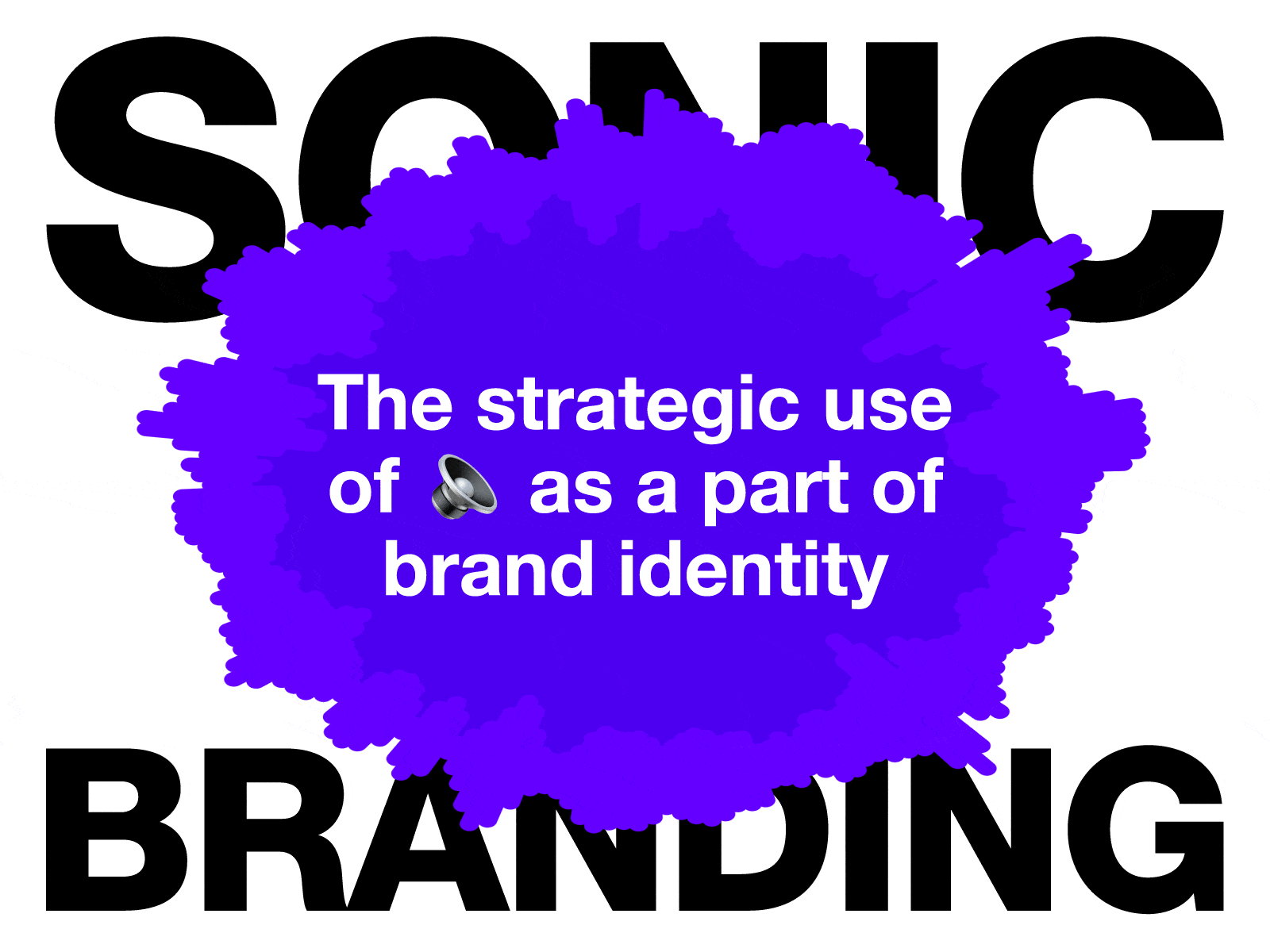Sonic Branding – Sound design as part of brand identity

Words by Gamar Karimli
The Impact of Sonic Branding: Shaping Brand Identity in the Digital Age
In the early 1900s, the advent of radio revolutionized brand communication, prompting companies to utilize distinctive sounds to differentiate themselves. Fast forward to today’s digital era dominated by social media and streaming services, where sound seamlessly integrates into our daily lives. This evolution has elevated the importance of sonic branding, with brands leveraging music and soundscapes to forge emotional connections, convey their essence, and stand out in a competitive market.
1. Forging an emotional connection with customers
2. Conveying the brand’s essence
3. Standing out in a competitive market
4. Enhancing brand memorability
2. Conveying the brand’s essence
3. Standing out in a competitive market
4. Enhancing brand memorability
Contemporary sonic branding involves crafting tailored music and soundscapes that resonate in virtual spaces, thereby improving the overall user experience. Brands must ensure consistency in these auditory elements across various platforms to maintain a unified and recognizable sound.
Audio Logos: The Rise of Sonic Symbols
Audio logos, brief sound snippets akin to visual logos, are gaining prominence in brand communication. These memorable soundbites aid in brand recognition across audio-centric formats like radio and podcasts. Simple, recognizable, and emotive audio logos leave a lasting impression on listeners, contributing to brand memorability.
So, what exactly are these audio logos?
Essentially, these logos are brief sound snippets, usually lasting only a few seconds. They are employed alongside visual logos to aid in brand recognition or may stand in for visual logos in audio-centric formats like radio, podcasts, or smartphone applications. Organizations frequently trademark their audio logos.
Now, let’s ponder over what factors contribute to the success and memorability of sound logos among a brand’s audience. The most effective sound logos are typically simple, instantly recognizable, and capable of evoking emotions in listeners. Repeated exposure enhances their impact.
Netflix’s Sonic Signature: A Brief, Memorable Welcome
Take, for instance, Netflix’s iconic sonic identity – a brief, welcoming tone preceding any program on its platform. This succinct soundbite is intentionally short, ensuring minimal interruption for time-conscious viewers. Its brevity, coupled with distinctiveness, renders it not only memorable but also imitable. This sonic signature forges a direct and potent emotional connection with the joy of binge-watching, reinforcing positive associations viewers have with the streaming service.
Netflix’s sonic branding strategy extends beyond mere recognition; it embodies the essence of the platform, offering an immersive entertainment experience. Serving as a prelude to delightful streaming sessions, this sonic logo becomes integral to the user journey. Its strategic deployment enhances brand identity, amplifies user engagement, and cultivates familiarity and comfort.
Apple’s Sonic Symphony: The Power of Familiarity
Turning our attention to Apple, a company renowned for its meticulous approach to design, their commitment to excellence extends to the realm of sonic branding. An emblematic component of Apple’s auditory identity is its startup chime – a distinctive sound heard upon booting up desktop computers.
Beyond its functional purpose, Apple’s startup chime serves as a welcoming gesture, especially following a system crash. Designed to reset the user’s mood with a soothing sense of calm and rejuvenation, it transcends mere functionality to evoke positive emotions. For numerous Apple enthusiasts, this chime holds a special significance, symbolizing the assurance of a reliable and familiar experience.
The startup sound, blending elements like keyboard tapping and charger plugging, maintains its distinctiveness while evolving alongside Apple’s design evolution.
Apple’s auditory strategy transcends a single sound; it’s a symphony meticulously orchestrated across various touchpoints. Whether setting up a new device, launching an application, or using Apple Pay, the brand ensures a seamless and harmonious auditory experience for users.
In the cases of both Netflix and Apple, the strategic use of sound goes beyond mere branding. It becomes an integral part of the user experience, fostering emotional connections and enriching the overall perception of the brand. These case studies highlight the power of sonic branding when thoughtfully integrated into a brand’s identity, leading to increased brand loyalty and positive user interactions.
Looking Forward
In our rapidly evolving digital landscape, brands must embrace innovative tools like AI to craft immersive auditory experiences that engage customers. By strategically integrating sonic branding into their identity, brands can foster deeper connections with their audience and enhance brand loyalty.
Check out our Instagram page for more sonic branding examples > @velvele.studio

